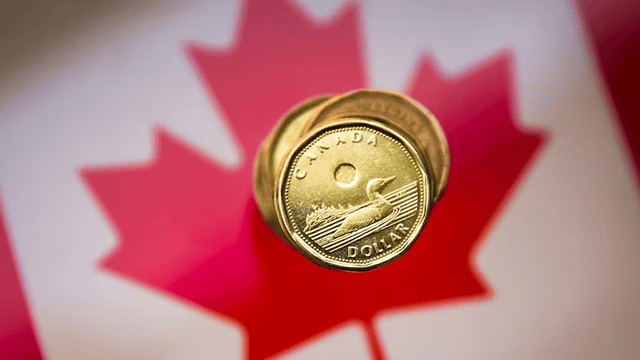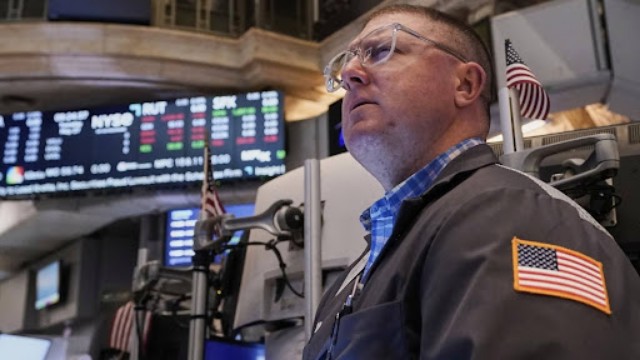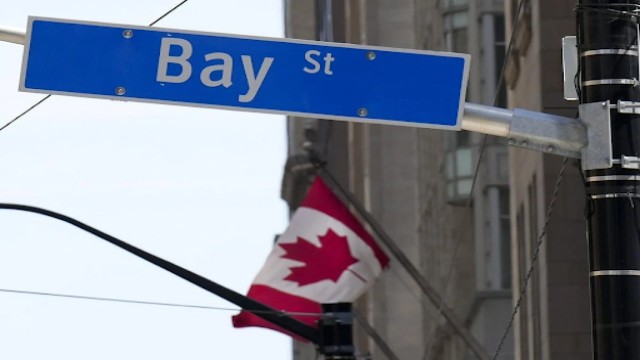
The CN Tower stands tall beside Toronto’s Bay Street Financial District on Friday, August 5, 2022. (Photo: Nathan Denette / The Canadian Press)
Canada’s main stock index took a sharp dive on Monday, dropping nearly 200 points as trading resumed after the long weekend. Investors returned to a broad market slump, with losses spread across nearly all sectors. The situation was no better south of the border, as U.S. stock markets also suffered a steep decline, dragged down by renewed trade tensions and criticism of the U.S. central bank’s leadership.
The S&P/TSX composite index closed the day 183.95 points lower at 24,008.86, marking a disappointing start to the week. Michael Currie, senior investment adviser at TD Wealth, described the drop as a reversal from last Thursday’s short-lived market jump. “We saw a pretty strong lift before the weekend, and now the markets are dealing with the fallout,” he explained.
Meanwhile, in the U.S., the Dow Jones Industrial Average plummeted 971.82 points to 38,170.41. The S&P 500 index lost 124.50 points, settling at 5,158.20, and the Nasdaq composite tumbled 415.55 points to 15,870.90.
The downward trend follows a rocky few weeks triggered by U.S. President Donald Trump’s tariff policies. His recent announcement of tough new trade duties on multiple countries sparked fears of rising costs and slowed economic growth. Although some tariffs have been paused, tensions have only intensified—especially with China. On Monday, Beijing warned other nations to be cautious in striking trade deals with the U.S.
Adding to the turmoil, Trump continued his verbal attacks on Federal Reserve Chair Jerome Powell, blaming him for not cutting interest rates fast enough to aid the economy. “He’s a major loser,” Trump said Monday, referring to Powell as “Mr. Too Late.” The president has previously criticized Powell, but the renewed pressure comes at a time when markets are already on edge.
Currie said Trump’s remarks are nothing new, but they stir fresh uncertainty in an already shaky environment. Negotiations between the U.S. and Japan over tariffs failed to reach a resolution last week. Still, there’s hope that if a deal is struck, it could set the stage for more global agreements and ease investor worries.
“It’s like a domino effect—if the U.S. and Japan agree, others might follow,” Currie added.
In currency markets, the Canadian dollar rose slightly, trading at 72.36 cents U.S., up from 72.17 cents last Thursday. The loonie’s gains were largely driven by a weakening U.S. dollar rather than any domestic strength.
Gold prices climbed again on Monday, providing a cushion for the TSX, even as most materials stocks struggled. “Gold rising tells us the market is backing away from economically sensitive stocks,” Currie observed. “There’s still a lot of nervousness out there.”
Other commodities showed mixed results. Crude oil for June delivery fell $1.60 to $62.41 U.S. per barrel, while natural gas dropped 23 cents to $3.02 U.S. per mmBTU. Gold for June surged $96.90 to $3,425.30 U.S. per ounce, and copper slipped less than a cent to $4.73 U.S. per pound.















